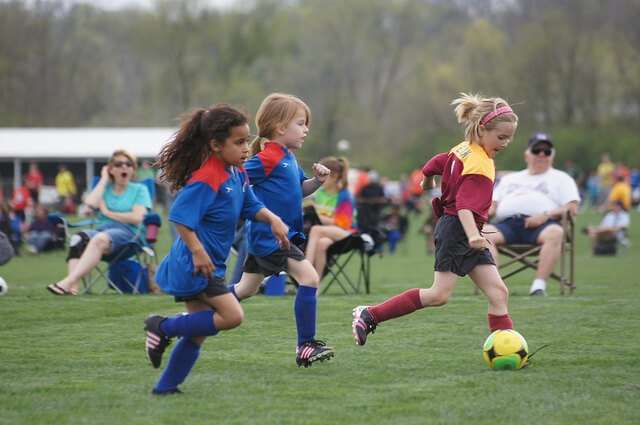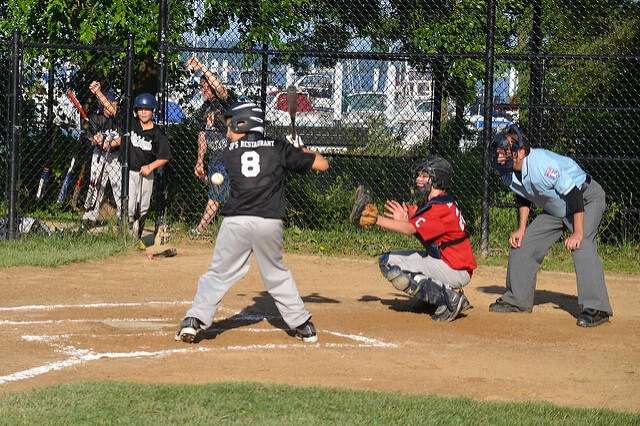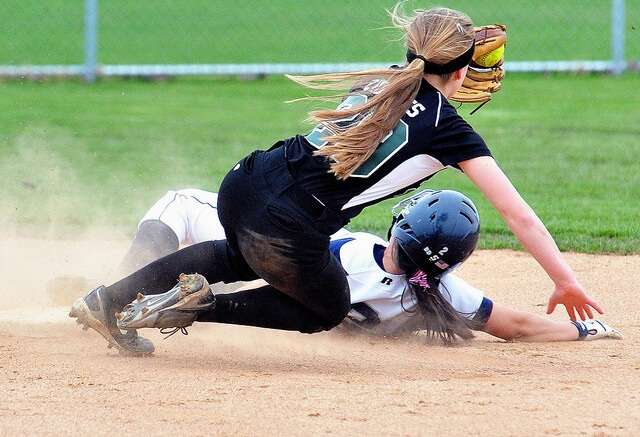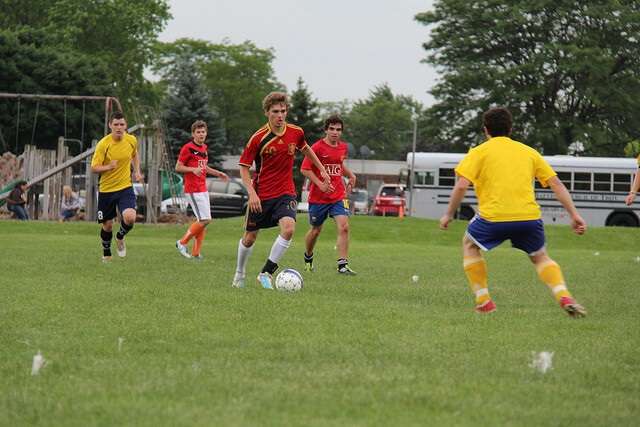Spring Sports: Safety Tips for All Ages

Snow melting and mercury rising are two sure signs that the spring sports season has arrived. In order to maximize the enjoyment of watching your son or daughter play, take some time to make sure they'll be safe while doing so.
Overall Safety Tips
No matter what sport children decide to play, Safekids.org recommends a few standard safety factors that parents should consider. First, have a physical exam —a doctor will be able to recognize any pre-existing conditions that could inhibit your child from playing. If the physical doesn't uncover any red flags, the next step is making sure the coaches have your emergency contact information and that they know if your child suffers from asthma or a similar medical condition.
Once your child has the green light to take the field, employ these three precautions:
- Stretch: Warm up and stretch before practices and games to help prevent injuries.
- Hydrate: Water, water, water! Drink plenty of it before, during, and after.
- Dress for Success: That means wearing the appropriate athletic gear depending on the sport.
Now that you have the basics down, follow these safety tips for the four most common spring sports:
Baseball
While baseball might not be a contact sport in the same manner as football or hockey, there are still opportunities for injury if players aren't careful. Injuries can result from being hit by a pitch, batted balls in play, and collisions on the base paths or in the outfield.

Kids playing baseball
Photo Source: Flickr/Edwin Martinez
Nemours.com recommends certain gear all baseball players should wear.
- Batting helmets: These should obviously be worn during an at-bat but also while running the bases.
- Athletic supporters and cups: Infielders and pitchers especially need these given how quickly a batter can turn a pitch around.
- Cleats: Wear molded plastic spikes as opposed to metal ones.
If your child plays catcher, a face mask, throat guard, helmet, cup, and pads will provide plenty of protection from wild pitches and foul tips. Be sure to ask about the type of bat the league allows. Aluminum bats pack much more of a wallop than wood, and that's especially dangerous for a pitcher reacting to a line drive
Softball
Softball is mostly a safe sport, but the propensity for injury increases with the speed of the pitch. Similar to baseball, injuries can result from batted balls, being hit by a pitch, and collisions on the base paths.

Sliding into second base
Photo Source: Flickr/K.M. Klemencic
Nemours.com recommends certain gear all softball players should wear.
- Batting helmets: Wearing a helmet while batting is first and foremost, but they're necessary to wear while running bases, too. Softball helmets should cover both ears and have an adequate face guard as well.
- Cleats: Wear molded plastic spikes as opposed to metal ones.
- Sliding pads and pants: Legs will be glad protective pads are in place the next time your childr tries to stretch a single into a double.
And just like with baseball, softball catchers need a face mask, throat guard, helmet, and pads. Mouth guards, shin and foot guards, and batting gloves are optional gear that also provide varying forms of protection.
Soccer
There's a reason soccer is the most popular sport world-wide — people simply love playing it. But that doesn't mean injuries don't happen.

Soccer can be a very physical game
Photo Source: Flickr/Maggio7
Nemours offers some tips to stay on the field.
- Shin guards: The shin is one area of the body with almost no padding, so shin guards are a must.
- Soccer socks: Shin guards won't stay in place without the right type of sock.
- Cleats: Opt for footwear with either molded cleats or ribbed soles as opposed to screw-in cleats.
- Mouth guards: Nothing stings quite like taking a ball to the face. A sturdy mouth guard should adequately protect teeth and tongue.
Lacrosse
Lacrosse is a fast-paced game that involves players using sticks to whip around a solid rubber ball. So, yes. Injuries can occur.

Players chase after a loose ball
Photo Source: Flickr/H. Michael Miley
Nemours lists certain gear to guard against injuries.
- Helmets and goggles: Boys are required to wear helmets, while girls are required to wear eye protection. Helmets need to have face masks, while goggles, ideally, are made of steel cages to protect the eyes.
- Mouth guards: The last thing anyone needs is catching a ball or stick to the chompers.
- Cleats: Opt for footwear with either molded cleats or ribbed soles as opposed to screw-in cleats.
- Cup: A typical requirement for boys. Wear one even if it isn't.
- Gloves: These are required for boys.
- Elbow and shoulder pads: These items are usually required for boys.
Goalies have the unenviable job of stopping balls whizzed right at them, and that requires a certain level of dress. In addition to helmets and gloves, all goalies will want to don throat and chest protectors along with arm and leg pads.
Concussions
Most people associate concussions with the sport of football, but, according to Psychology Today, they can also result from sports such as baseball, lacrosse, and soccer. Learn the symptoms and consult a medical professional immediately if you think your child has suffered one.
Do your kids play spring sports? What safety measures do they follow?
Feature Photo Source: Flickr/wrightbrosfan

